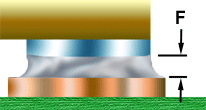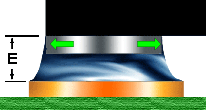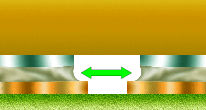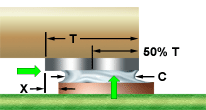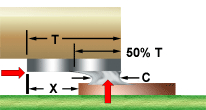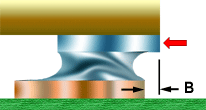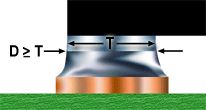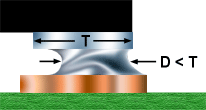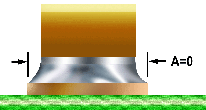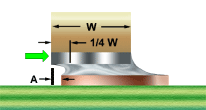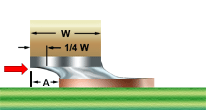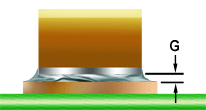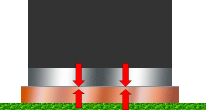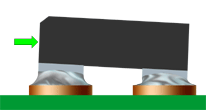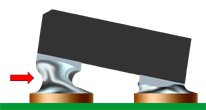CHIP COMPONENTS BOTTOM-ONLY TERMINATIONS
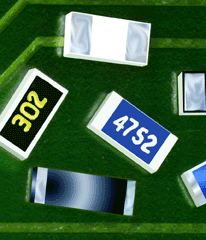
BOTTOM-ONLY TERMINATIONS
The mechanical properties of the solder joints of bottom-only terminations are slightly reduced from those of 1-2-5 chip components, as only the metallized termination pads on the underside of the component are available for mechanical and electrical attachment tot he printed wiring board. The bottom only termination presents some difficulty during visual inspection, as very little of the actual termination is exposed or visible.
See Section 7.01 "Surface Mount Soldering, General Requirements", for common accept/reject criteria.
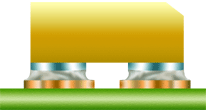
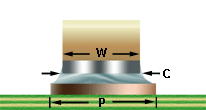
PREFERRED
The component is properly centered between the lands and exhibits acceptable solder thickness and tilt. No mechanical or heat damage is evident.
NASA-STD-8739.2 [12.9.1]
PREFERRED
END JOINT WIDTH (C)
The width of the end joint is equal to the width of the compoenent (W), and extends to the width of the land (P).
Best Workmanship Practice
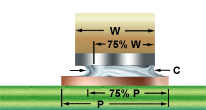
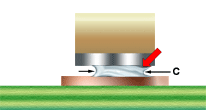
ACCEPTABLE
END JOINT WIDTH (C)
End joint width shall not be less than 75% of the component termination width (W) or less than 75% of the land width (P).
Best Workmanship Practice
UNACCEPTABLE
INSUFFICIENT END JOINT WIDTH (C)
An end joint of insufficient width indicates that there may be solderability problems that may adverely impact the long-term reliability and integrity of the solder termination.
Best Workmanship Practice

